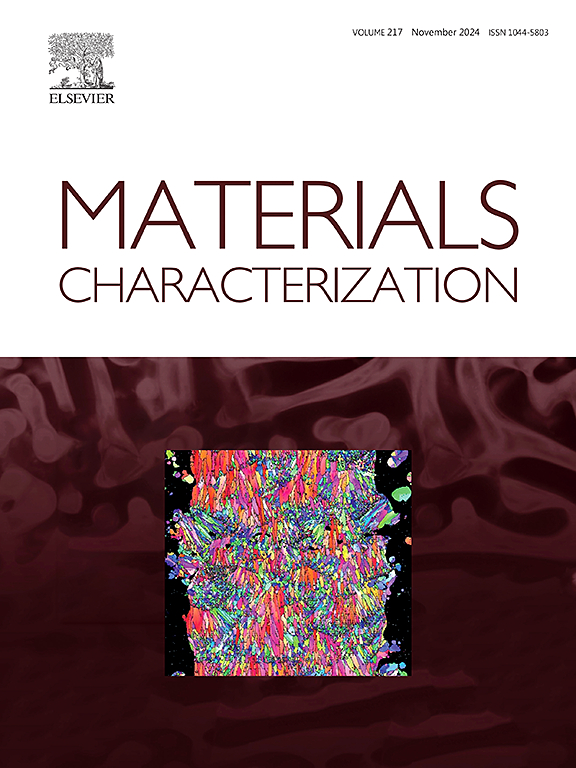Microstructural, mechanical and electrical properties of aluminum-copper butt joints produced by high-speed friction stir welding
IF 4.8
2区 材料科学
Q1 MATERIALS SCIENCE, CHARACTERIZATION & TESTING
引用次数: 0
Abstract
Driven by the accelerating trends for lightweighting and electrification of vehicles, friction stir welding (FSW) of aluminum with copper is gaining increasing attraction in the automotive industry. Therefore, this work investigated FSW of 1.6 mm-thick oxygen-free high conductivity (OFHC) copper (Cu99.95) and 2.0 mm-thick EN AW-1050A aluminum (Al99.5) sheets. The microstructure of the butt joints and the mechanical and electrical properties of the welded blanks were analyzed. The experimental methods included scanning electron microscopy (SEM) with energy-dispersive X-ray spectroscopy (EDS) and electron backscatter diffraction (EBSD), micro-computed tomography (μCT), hardness mapping, quasi-static uniaxial tensile testing, three-point bending and resistivity/conductivity measurements. Even at the high welding speed of about 1 m/min force-controlled FSW was successful with a tool offset towards the aluminum sheet. Sound joints with finely dispersed copper particles in the weld and with a 0.5 μm-thin intermetallic layer between the weld and the copper sheet were obtained. Tensile strength, fracture strain and hardness of the defect-free joints were about a quarter lower, but their electrical conductivity was slightly greater than those of the aluminum sheet. The decrease of the mechanical properties was mainly due to dynamic recrystallization (DRX), whereas the increase of the conductivity was due to the dispersion of copper particles in the weld. However, decreasing the forge depth caused sporadic seizure and release of the weld metal by the tool shoulder and reduced the forge pressure applied on the weld metal. Accordingly, the material flow became unstable, open voids formed due to lack of refill on the weld surface, and lack of bonding between the rings of the stir pattern occurred. These defects impaired the tensile properties of the blanks, but their influence on the electrical properties was less significant.
求助全文
约1分钟内获得全文
求助全文
来源期刊

Materials Characterization
工程技术-材料科学:表征与测试
CiteScore
7.60
自引率
8.50%
发文量
746
审稿时长
36 days
期刊介绍:
Materials Characterization features original articles and state-of-the-art reviews on theoretical and practical aspects of the structure and behaviour of materials.
The Journal focuses on all characterization techniques, including all forms of microscopy (light, electron, acoustic, etc.,) and analysis (especially microanalysis and surface analytical techniques). Developments in both this wide range of techniques and their application to the quantification of the microstructure of materials are essential facets of the Journal.
The Journal provides the Materials Scientist/Engineer with up-to-date information on many types of materials with an underlying theme of explaining the behavior of materials using novel approaches. Materials covered by the journal include:
Metals & Alloys
Ceramics
Nanomaterials
Biomedical materials
Optical materials
Composites
Natural Materials.
 求助内容:
求助内容: 应助结果提醒方式:
应助结果提醒方式:


